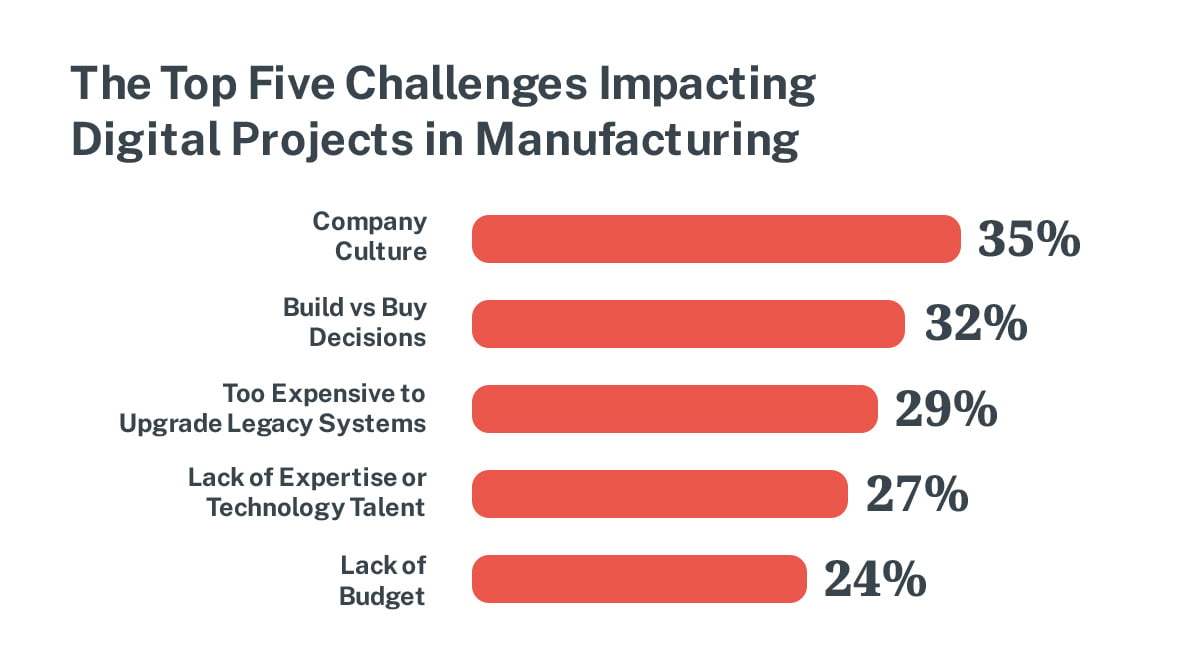
Frontline Digital Transformation
8 min read
How to Communicate Change with the Frontline Workforce

People are the most overlooked aspect of digital transformation —
97% of companies’ digital transformations fail when they don't include line managers and operators.
Frontline employees are essential to your digital transformation success.
Frontline Digital Transformation (FDX) isn’t a single change or solution, however. FDX is an iterative process of finding and deploying solutions that enable your frontline workforce to perform at their best.
"The solution is not the final solution. It’s just a step in the right direction."
Michael Muilenburg, Director of Operational Technology, 3M
At its core, FDX requires changes to the way your frontline workforce performs their tasks. This creates natural resistance and can be challenging to overcome if you don’t communicate the change well. A company culture that resists change is the most common obstacle to digital transformation success.
This means that employees will either make or break your FDX efforts. It’s crucial to be thoughtful with how you implement and communicate changes.
What is Change Management?
Change management is the collective practice of communicating organizational change to your employees, combined with strategies to garner employee buy-in. For manufacturing, change management is the people-side of your processes.
Effective change management is a strategic approach to understanding your frontline workforce’s needs, challenges, and concerns. When leveraged properly, it allows companies to create a roadmap for implementing and scaling new solutions across manufacturing lines, shifts, and facilities.
8 Strategies for Communicating Change with the Frontline Workforce
Snail Mail
While email is the most common form of communication in the business world, it is also the least effective. People skim emails, they are impersonal and often ignored entirely. Many frontline employees might not even have active email inboxes. Sending letters to your employees’ homes can be a unique and impactful way to set your communications apart.
While you shouldn’t make a habit of sending letters to your employees, if the change is important enough, sending a well-written “snail Mail” can be an effective way to deliver important information. Even better, have it come from an executive or the CEO.
Friendly Competition
Even though your employees may clearly benefit from the solution that you are trying to implement, getting them to try something new can be challenging. Friendly competition among your employees can open them up to new ideas in a fun, low-stakes environment.
For example, say you were trying to develop a new training solution that enables workers to cross-train and learn new skills outside of their current responsibilities. A common resistance to that change may sound like, “We don’t have time for this, I’m too busy to take on ‘extra’ work.”
A creative way to encourage employees to participate in the change could be a competitive activity where lines, teams, or shifts earn points for completing training coursework. Then award the winning team with gift cards or a catered meal. The competition will spark certain personnel to outperform their colleagues, but the main benefit is that all employees will realize that they have time to participate and resistance will dwindle.
“People don’t resist change nearly as much as they resist being changed.”Taylor Harlin, Change & Development Coach, Johnsonville
Generate Short-Term Wins
Break up your changes into smaller milestones and celebrate those accomplishments as you go. Celebrating small successes along the way helps provide evidence that sacrifices are worth it. This rewards people who are pushing the change by allowing them to be recognized along the way.
Benefits of generating short-term wins:
- Helps refine the vision and accompanying strategies
- Proves to cynics that the change is feasible
- Keeps leaders happy with the progress
- Builds momentum
Rewards Programs
Rewards don’t have to be competition-based either. Rewards programs are a low-cost way to show employees that these initiatives are important and create a positive psychological effect on the relationship between the change and how your employees feel about it.
For example, award gift cards to employees who participate in the initial onboarding or complete the training program within a certain time frame. These may seem arbitrary, but they can be the push someone needs to make those tasks a priority.
Creative Signage
The best place to communicate change is where the work is happening. Bulletin boards in employee common areas are not the best place to communicate important initiatives because they are crowded and full of non-essential information.
Instead, place carefully crafted signs or messages in areas where the frontline performs their daily tasks and alternate locations. This shifts the context from top-down messaging, to precise communication that has more relevance to frontline work.
Heat Mapping
A Heat Map allows you to find key stakeholders that will help make the change successful. A Heat Map is a comprehensive, visual depiction of where, when, and how these stakeholders will be impacted by a change.
A Heat Map shows:
- Who’s impacted by each change
- How much the change has impacted workflows
- When the impact of the change will be felt
- Where in your processes the impact of the change will be felt
Most importantly, Heat Maps help leadership teams make better decisions on how to sequence changes and how to allocate resources to foster change.
Be Open to Changing the Change
Every change faces resistance of some sort. Expect that there will be individuals and systemic resistance to new technology because change will disrupt the normal way of doing things.
For FDX to truly be a collaborative process of change and continuous improvement, the changes themselves have to be flexible. This means that you need to listen to frontline feedback, suggestions, and concerns.
"Better for most of us to start learning now, how to cope with change. Better for most of us, despite the risks, to leap into the future. And to do so sooner rather than later.”
John P. Kotter, Leading Change
Break Expectations
With any channel or form of communication, flooding your employees in one particular way will dilute your message. Don’t do the same thing twice. Try to mix up how and where you communicate the change to your frontline. By mixing it up, workers will notice your communication more and retain that information better.
Topic(s):
Frontline Digital Transformation
Empower Your Frontline Workers with Dozuki
Hundreds of thousands of workers around the world use Dozuki to access the knowledge and skills they need to perform to standard.
Related Posts
View All Posts
Frontline Digital Transformation
5 Ways to Get Wifi on the Factory Floor
6 min read
Here’s the reality, many industrial environments lack wireless internet. It’s not for a lack of trying. However, there are real, pragmatic reasons that some companies can’t...
Continue Reading
Frontline Digital Transformation
What is Frontline Digital Transformation?
4 min read
Manufacturing leaders agree that adopting digital technology is essential to future success. Despite this mindset, 84% of digital transformations fail to improve performance...
Continue Reading
Podcast
Solving Modern Workforce Challenges in Food & Beverage Manufacturing
2 min read
In the midst of unprecedented market demands and supply chain issues, the most innovative food & beverage manufacturers are finding new, creative ways to support an efficient...
Continue Reading



